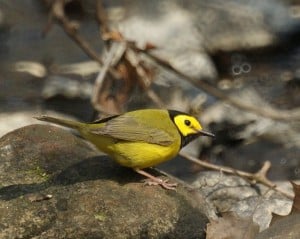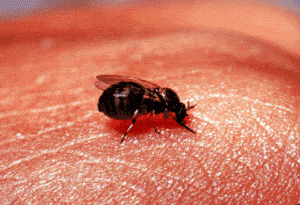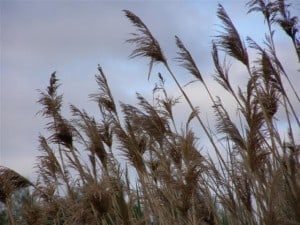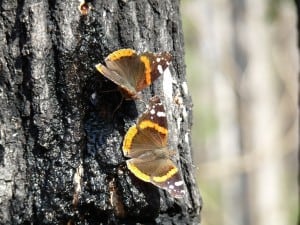Last Sunday, my wife and I went for a long walk, finally able to enjoy some sunshine and warm temperatures. As usual, however, I couldn’t help noticing that there were no kids playing outside. Why not? Well, partly because many parents consider it too risky to let their children play outdoors and to engage with nature without adult supervision. This is simply one of numerous examples of how our sense of where real risk lies in the 21st century is out of sync with reality. If we want to learn about clear and present danger, more of us should start paying attention to climate change and especially to the latest Intergovernmental Panel on Climate Change (IPCC) report that was released this past Monday.
The report states unequivocally that climate change is driving humanity and the natural world in which we are embedded toward an unprecedented level of risk and devastation. And the wild ride has only just begun – to wit the Calgary Flood of this past summer. The report predicts that the highest level of risk will first hit plants and animals, both on land and in the acidifying oceans. In other words, nature is the early-warning system – the proverbial canary in the coal mine. The report states that “Spring advancement” – the earlier occurrence of spring events, such as breeding, bud burst, breaking hibernation, flowering, migration – is being seen in hundreds of plant and animal species in many regions.” With this in mind, I thought I would remind readers of how a changing climate is already affecting the Kawarthas and what is in store for the longer term.
Happening now
• From 2010 through 2013, 40 of the 48 months (83%) in Peterborough were milder than the 1971 to 2000 average. Yes, this past winter has bucked the trend, but more about that later.
• Species that used to be restricted to extreme southern Ontario such as Virginia Opossums, Southern Flying Squirrels, Hooded Warblers, Red-bellied Woodpeckers and Giant Swallowtail butterflies are now seen regularly in parts of the Kawarthas.
• Southern Flying Squirrels are mating with Northern Flying Squirrels and creating hybrids.
• Short-distance migrants such as Red-winged Blackbirds are, on average, returning earlier in the spring. Some species are nesting earlier, too.
• The peak calling period of early breeding frogs (e.g., Spring Peeper, Wood Frog) is now 10-20 days earlier than in 1995.
• The peak bloom in spring wildflowers such as Trout Lily and White Trillium has been two to three weeks earlier than the traditional mid-May average in recent years.
• Black flies now reach peak numbers in late April or early May. In the 1960s, peak numbers were not until mid- to late May. Quite often, the Victoria Day Weekend was the worst.
• Tree pollen is emerging roughly two weeks earlier and has been very abundant in recent years.
• We are seeing a marked increase in invasive plant species such as Common Reed (Phragmites), Dog-strangling Vine and Garlic Mustard.
• There has been a huge decline in Monarch butterflies. Although the eradication of milkweed in the American mid-west is probably the main reason for the population crash, climate change impacts along the butterfly’s migration route and on its wintering ground have been significant.
• Gray Jays, too, are dwindling in number. This species used to be seen regularly in the northern Kawarthas. However, mild falls and winter may be leading to the spoilage of the food these birds hide for later consumption and therefore affecting their breeding success. These birds are late winter nesters.
• Waterfowl has been lingering much later into the fall and earlier winter. This is directly linked to a later freeze-up of lakes and rivers most years.
Extreme Events
Increasingly, occurrences of extreme weather are causing unprecedented events in our flora and fauna.
• In mid-March 2012, we had eight days of 20 C temperatures. Frogs were calling, Mourning Doves were nesting, trees were flowering and the ice went out of the lakes. These events are typical of mid-April on an average year. Ontario lost 80% of its apple production, because the record-early blossoms on the apple trees were later killed by frost.
• April 2012 saw an unprecedented invasion of at least 300 million Red Admiral butterflies into Ontario. The butterflies arrived from Texas where unparalleled drought (climate change?) had killed all of the predatory insects. When rains finally came and wildflowers bloomed, there were no predators to reduce the number of Red Admiral caterpillars. The butterflies reproduced like never before. When spring arrived, wave came north. However, nearly all of the Red Admirals died, because their nettle host plants had not yet emerged.
• The summer of 2012 was maybe the worst on record for aquatic plant growth, which caused many a headache for boaters. The phenomenal plant growth was linked in part to an extremely warm summer and a record-early ice out – hence a longer growing season.
• The frigid winter of 2014 saw a complete reversal of the multi-year warming trend we’ve seen. Even March was 5.3 C cooler than average. Some climatologists believe that the intense and long-lasting cold may be linked to changes in the Jet Stream resulting from a warming Arctic. Species of ducks and grebes that we almost never see in Peterborough turned up on the Otonabee River, having been displaced from the almost entirely frozen Great Lakes. This past winter also saw an unparalleled invasion of Snowy Owls into Ontario. This has been linked to a population boom in owls in the Arctic last summer because of exceptional lemming numbers. With so much food available, Snowy Owls were raising six or more owlets instead of the usual one or two. Climate change may be an important reason why lemmings became so abundant.
Concern for the future
Here is a sample of the many changes that are being forecast for the Kawarthas in the coming decades.
• Coldwater fish species like Walleye are expected to decline substantially with increased air and water temperatures.
• Black-legged Ticks, which carry Lyme disease, are expected to have spread all over Southern Ontario by 2020. They may already be in the Kawarthas.
• Our forests will take a beating. This will be due to increased temperature, more frequent drought, competition with invasive species, greater risks from insect pests and more fungal infections.
• A changing climate is likely to favour non-native invasive animals and plants with generalized requirements over native species with more specialized needs. This will likely compound the impacts of climate change in aquatic ecosystems.
Unfortunately, there will also be emotional distress. We can expect a huge change in how it “feels” to live in the Kawarthas. Many seasonal rituals (e.g., a backyard skating rink) are almost certain to disappear. There will also be a marked decline the quality of our experience of the natural world. With less of a sense of what to expect and what is normal, we’ll have to learn to expect the unexpected.
Unless thousands of scientists have it all wrong, climate change is maybe the greatest known risk humanity faces. But, here’s the good news: The IPCC says that the impacts of climate change—and the costs of adaptation—will be “reduced substantially” if we drastically cut our emissions of greenhouse gases. As for me, I’ll be voting for political parties that promise to bring in a carbon tax.
Side-bar: Learn about Australian Nature
At the April 10 meeting of the Peterborough Field Naturalists, Paul Elliott of Trent University will make a special presentation entitled “Koalas, Kangaroos and Kookaburras”. He will be sharing stories of his encounters with the plants and animals of the Dandanong Ranges and the coastal areas of Victoria and New South Wales. The meeting is in the auditorium of the Peterborough Public Library and commences at 7:30 p.m. Everyone is welcome. For additional information contact Martin Parker, mparker19@cogeco.ca or 705 – 745 – 4750



